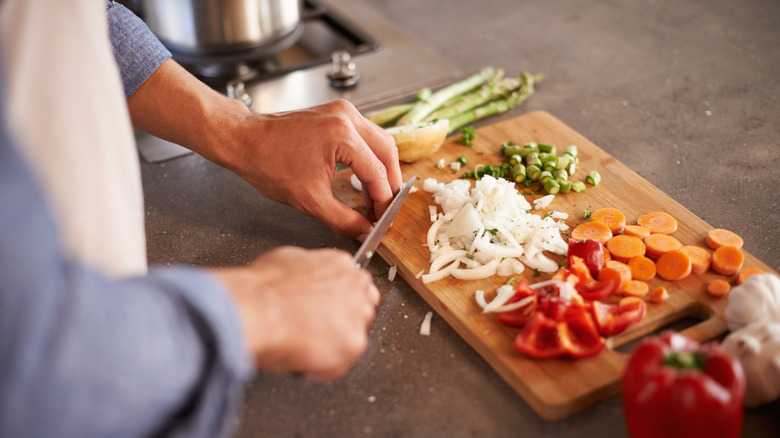How to Get Mold Out of Wood Cutting BoardTremendous Tips and Tricks
Written By James Morgan
Barbecue enthusiasts, you know how essential a clean and well-maintained cooking area is for creating those mouthwatering dishes. But what do you do when you discover mold on your wood cutting board? Mold can be daunting, but don't worry! We're here to help you with a detailed guide on how to get mold out of wood cutting board. We'll give you practical steps, share some life-saving tips, and ensure your BBQ prep stays healthy and hygienic.

Why Mold Grows on Wood Cutting Boards
Understanding why mold grows on your cutting board is the first step to preventing it. Wood is a porous material, making it susceptible to moisture retention. When combined with food particles and a warm kitchen environment, it creates the perfect breeding ground for mold. Mold on a cutting board is more than an eyesore; it poses a health risk as well. Hence, addressing mold issues immediately is vital.
Signs of Mold Growth
Visible dark spots or patches on the wood surface are the most apparent signs of mold. You might also notice a musty smell, which indicates the presence of mold spores. If you experience these signs, its time to take action.
:max_bytes(150000):strip_icc()/prevent-cutting-board-slipping-1123-c9837c7f958745b792c2b115c7d7bccd.jpg)
Essential Supplies for Mold Removal
Before diving into the cleaning process, gather the necessary supplies:
- White vinegar
- Baking soda
- Lemon juice
- Salt
- Non-abrasive scrub brush
- Clean cloth
- Hydrogen peroxide
Step-by-Step Process to Get Mold Out
Heres the reassuring guide to mold-free wood cutting boards:
1. Initial Cleaning
Start by washing the cutting board with hot, soapy water. Scrub thoroughly to remove any food particles or residues.
2. Use Vinegar and Baking Soda
Mix equal parts of white vinegar and baking soda to create a paste. Apply the paste to the moldy areas and let it sit for 10-15 minutes.
3. Scrubbing
Using a non-abrasive scrub brush, scrub the moldy spots gently. The combination of vinegar and baking soda will lift the mold off the surface.
4. Rinse and Dry
Rinse the cutting board thoroughly with hot water and dry it with a clean cloth. Stand it upright to air-dry completely, preventing any remaining moisture.
5. Lemon Juice and Salt
For a final touch, sprinkle salt over the cutting board and rub it with lemon juice. This will not only remove any remaining mold but also leave your cutting board smelling fresh.

Preventive Measures to Keep Mold at Bay
Regular Cleaning
Clean your cutting board after every use. Dont allow food particles and moisture to settle in the wood.
Proper Drying
Always ensure your cutting board is completely dry before storing it. Hang it up or lay it vertically for better air circulation.
Periodic Maintenance
Occasionally apply a food-safe mineral oil to your cutting board. This helps to create a protective barrier against moisture.

Common Mistakes to Avoid
Using Harsh Chemicals
Avoid using bleach or other harsh chemicals that can damage the wood and pose a risk to your food's safety.
Neglecting the Cutting Board
Dont leave your cutting board wet or dirty. This can accelerate mold growth.
FAQs
How often should I clean my wood cutting board?
It is advised to clean your cutting board after each use to prevent the build-up of food particles and moisture.
Can I use bleach to clean mold off my cutting board?
No, bleach can damage the wood. Choose natural cleaning agents like white vinegar and lemon juice.
What if the mold keeps returning?
If you consistently notice mold, consider replacing the cutting board as it might be too damaged to clean effectively.
For additional tips on cutting board maintenance, visit Cutting Board Tips.
As an Amazon Associate, I earn from qualifying purchases.
Conclusion
Tackling mold on your wooden cutting board need not be a daunting task. With the appropriate supplies, a well-structured cleaning process, and regular preventive measures, you can ensure your cutting board remains mold-free for all your barbecue preparations. Stay vigilant, clean regularly, and keep enjoying your BBQ.



